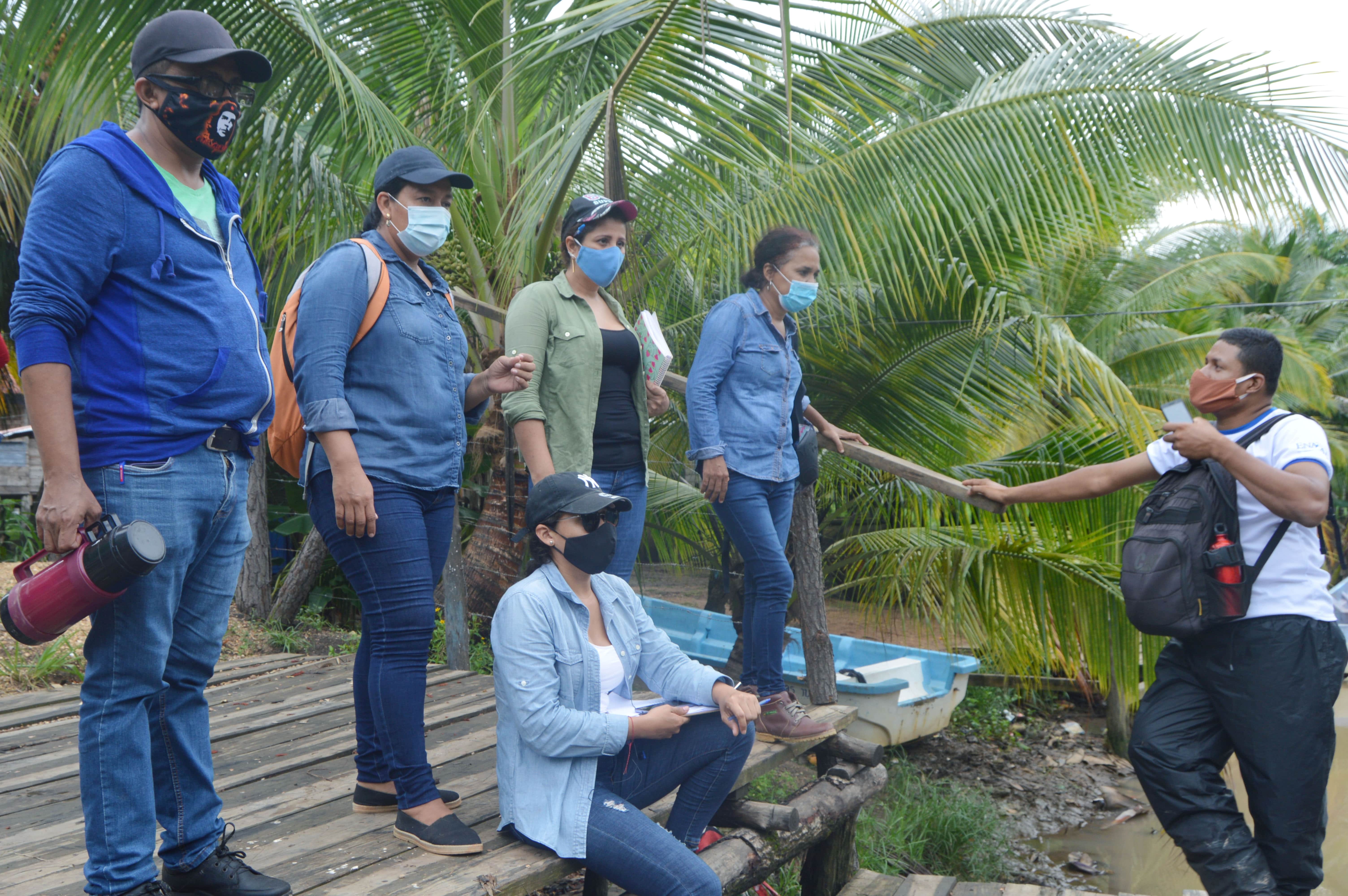
Teachers hope to conduct research that will help improve community and environmental living conditions.
Community-agreed apprenticeships
The students of the Master's Degree in Social Anthropology of URACCAN took a tour of the community of Lamlaya, to know the entire procedure of the wastewater project, which will benefit more than 12 thousand people from the city of Bilwi; in addition, they visited the German quarter, to learn about the area of risk to natural disasters.
The visit was coordinated by Dr. Ivania López, who facilitated the Environmental Management, Sustainable Development and Environment module. Students had the opportunity to delve into topics addressed in the classroom, but now from the fact site, from communities, neighborhoods, and hotspots, in this way they reflect on what they should do as new anthropological researchers.
Sanitation project (wastewater) and risk point in bilwi city
Engineer Steve Coleman, head of the departmental technical unit of the National Aqueduct and Sewerage Company (ENACAL) and in charge of both drinking water and wastewater plants in Bilwi, explained that from ENACAL these projects are being implemented, where a collection plant is located in Sisin, a treatment plant in Kuakuil , the storage tanks that are in the community of Boom Sirpi and the networks in the city of Bilwi, which are divided into 6 hydraulic sectors.
"We have the drinking water system in the city, the direct beneficiaries are 12,500 users, which are the connections that will be left and then some extensions," Coleman said, this has to do with the drinking water project.
With regard to the Sanitary Sewers component, Coleman detailed to the teachers that this project is composed of condominial networks, collecting networks, a pumping station and the treatment plant.
"The treatment plant consists of treating all those (waste) waters, because the water we plan to capture from the Landkrik River, which will be used in each house, has to go to one place, so the treatment plant is going to process all that water," the manager exposed the teachers.
After that visit in the community of Lamlaya, the group of teachers headed to the German quarter, where they were able to observe the creation of rubbish in the river, which has affected not only the population surrounding that stream, but also the general population, because a trench breeding ground has formed, causing diseases such as malaria and dengue , in addition to being an area of high environmental risk.
Student Juan Francisco Ruiz Suárez successfully valued the visits made throughout the day, because this allows them as Teachers to deepen and focus the theory from science versus the components of nature.
"All this can be preserved within the framework of some indicators, in that sense we observe the water project in Sisin, we observe the dam, and how that has had a sociocultural impact on communities, we also saw the water (waste) project here in Lamlaya and this allows us to understand how we can all contribute to the environmental impact from anthropology and nature" , the teacher said.
Finally, Ruiz Suárez expressed his feeling as a resident of Bilwi, in the face of the eminent carelessness with the garbage that accumulates in the river located in the German quarter, "we have to make an effort between civil society and communities in relation to cultivating new practices on the subject of recycling garbage, because this brings pollution to the environment", concluded the student.
It should be mentioned that with these visits to four important sites in the municipality of Puerto Cabezas, Dr. López concluded her participation as facilitator of the module received by the teachers; now they will start another theme with master Noah Guadamuz.
- Log in to post comments
- 58 views
